11 Best Link Building Strategies of 2024 (to Boost Your Rankings)
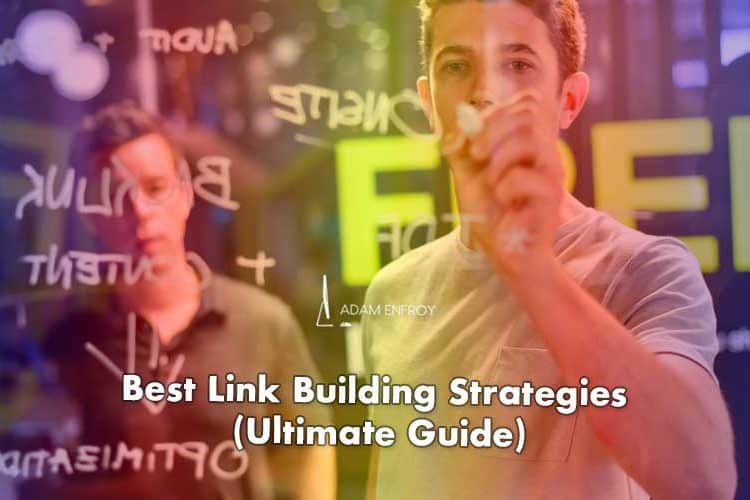
Backlinks are integral to SEO. It goes without saying that if you want to seriously move the needle when it comes to improving your rankings, you must incorporate link building strategies into your plan.
Links are like the currency of the Internet. They’re a vote of confidence from one website to another that tells Google and other search engines how authoritative your site is. And the more links your website receives from other high Domain Authority sites, the better your chances of ranking.
In fact, SEO professionals say that 75% of SEO is off-page (link building), and only 25% is from on-page factors.
What Are the Best Link Building Strategies?
But what are some sure-fire ways to obtain links?
And what is currently working for SEOs and link builders in 2020?
Whether you want to start a blog or make more money online with affiliate marketing, this guide will provide the best link building strategies to incorporate into your marketing plans this year.
1. Guest Posting (The Right Way).
You have most likely heard of guest blogging, and this is probably one of the most common forms of building links right now. The concept of guest posting is easy, and it tends to be easier to figure out which sites to approach.
But if you’ve never heard of it, guest posting is pretty self-explanatory – finding other relevant websites and writing an article for them (or in collaboration with them). You’ll often be allowed at least one backlink in return, either within the content or within the bio section at the bottom.
When I say “the right way,” what I mean is focusing on relevancy.
Yes, authority metrics like DA (Domain Authority) have their uses. But, the critical thing is to write for sites that are relevant to your website – or can be made consistent with a piece that bridges the gap between their niche and yours.
So, there are going to be a few steps involved.
1. Prospecting.
Think about keywords related to your niche or the subjects you’d like to talk about. For each of these keywords, tag on advanced operators to try and find suitable websites on Google:
| Keyword + “My Guest Posts.” |
| Keyword + “Now Accepting Guest Posts.” |
| Keyword + “Submission Guidelines.” |
| Keyword + “Submit a Guest Article.” |
| Keyword + “Submit Article.” |
| Keyword + “Submit Blog Post.” |
| Keyword + “Submit Guest Post.” |
| Keyword + “Submit News.” |
| Keyword + “Suggest a Guest Post.” |
| Keyword + “The following guest post.” |
| Keyword + “This guest post is from” |
| Keyword + “This guest post was written” |
| Keyword + “Write for Us.” |
| Keyword + inurl:guest-post-guidelines |
| Keyword + inurl:guest-posts |
| Keyword + inurl:write-for-us |
The reality is there are probably many more operators you could tag on, but this should give you a good starting point.
You’ll also want to collect an appropriate contact email for each site.
Often, it’ll be on the contact or “about us” page. But it may not be as obvious as that. In which case, you can use tools like Hunter.io to pull out emails associated with the site quickly. Just make sure you’re contacting the best person (often the owner of the website or a designated editor).
2. Qualify These Prospects.
Exactly how you qualify them depends on your preference, but I’d advise you to at least look at an authority metric and a quick assessment of the traffic to figure out if it’s worth your while.
After all, no point putting all your effort into articles for sites which get a handful of visitors – unless of course it’s a new site and you believe it has the potential to become a large site in the near future.
A fairly weak backlink from a new site like that could become a lot stronger over time, provided the site grows and builds authority.
You can use tools like Moz, or if you prefer Domain Rating, you can use Ahrefs.
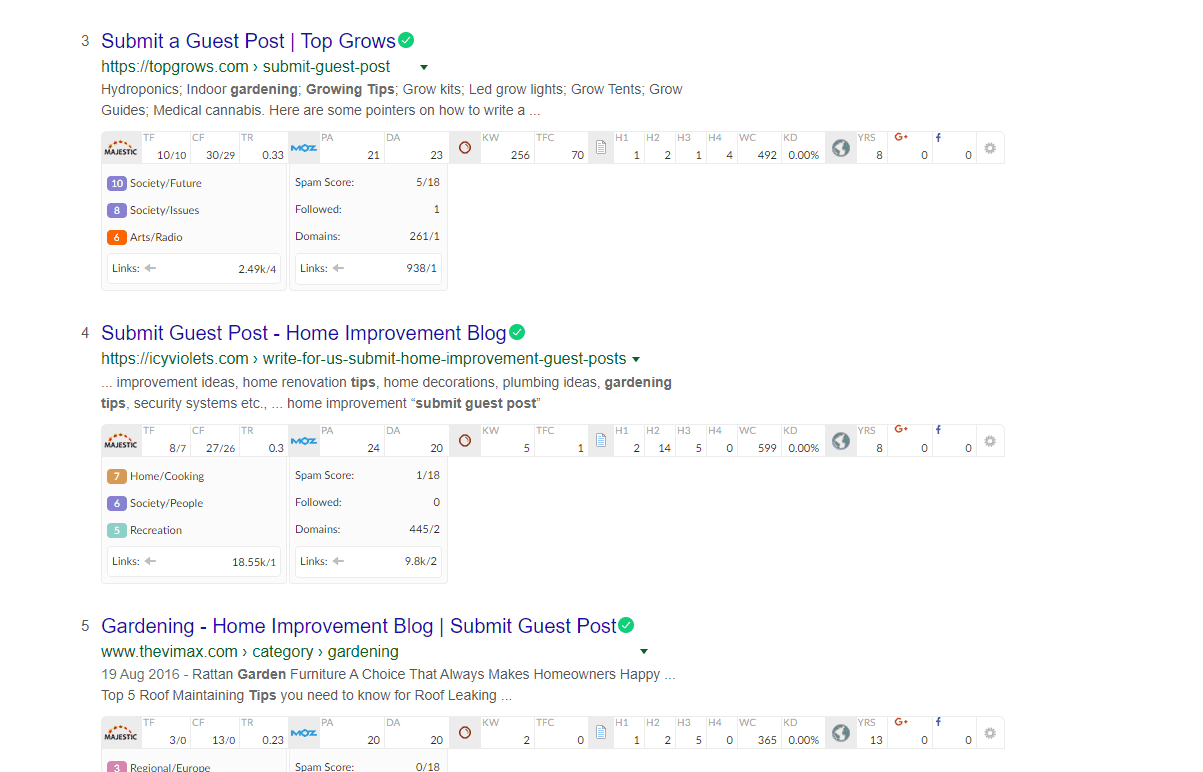
3. Reach Out to Your Prospects.
I’m not a fan of rewriting articles and sending them out. After all, your guest posts need to be unique, and you can’t afford to have more than one site publish the exact same piece.
There are a lot of guest post templates out there, but they are all pretty similar. You’ll get the best results, however, by developing your own basic template and customizing it appropriately.
The more customized your emails and the more it stands out from the crowd – the more responses you’ll get, and the better your success rate.
But generally, you want to:
- Show them your previous work (other guest posts or articles you’ve done)
- Suggest a couple of titles that you feel are suitable (you could do this in the initial pitch, but I recommend it later in the conversation)
- Write the article and get it published (obviously)
Once you’ve agreed on a title, a word count range, and have looked at their guidelines, make sure you stick to that and write a unique, well-researched piece. Make sure grammar and spelling are on point, so they don’t have to do a lot of editing.
Check out my guide to the best grammar checker tools to use this year if you want to up your writing skills.
And if you can, see if you can get an indication of when it’ll be published. You’ll sometimes find you need to follow up once or twice to push the content through.
2. Link Reclamation.
This is a useful one, especially for any fairly large brands that have various mentions of their brand or products out there.
One way of doing this is to search Google with this operator:
“your brand name” -site:yourwebsite.com
You could replace the first keyword with either your brand name or the name of a specific product you offer. This’ll pull up every instance of it being mentioned on the net, but obviously takes out the results from your own website.
You can even use Ahrefs Content Explorer to do this. Useful if you want to extract it into a report or add certain filters.

Next, just reach out with a simple email, thanking them for mentioning you – but just point out that by linking to you, users can more easily, just click through to learn more about your brand.
And in the case of it being a product, it makes even more sense. Just make sure you offer up the product page as the link.
3. Your existing network of contacts.
Are you or your company part of any professional, industry, or local association or organization?
Have you spoken or sponsored any industry events or conferences?
Do you have some go-to suppliers for your products or services?
Or long-standing clients?
All of these areas could be potential sources of links. And the links will, of course, have a degree of relevancy. You may be more reluctant to reach out to clients to ask for a link. However, your product suppliers could have a suitable “Useful Links” page, as for the associations or organizations you’re part of.
4. Resource Page Links.
There are a lot of websites out there that have these “Useful Resources” or “Useful Links” type pages. And if you can find some in your industry or in related niches – that can be a very streamlined way of building links.
An example of how one looks

And as you can see, the BWA has linked out to businesses that are related to wood carvings, such as a supplier of timber and business that woodworking machinery and tools. Very topically relevant and a potential source of traffic that’ll turn into sales.
This is going to be about brainstorming keyword ideas for your niche or related to your niche, and again, tagging on some advanced operators.
Let’s use the above example:
You have a business that sells woodworking machinery. You think of keywords like “woodworking,” “woodworking course,” “woodwork tips.”
Then tag on advanced operators such as these:
| Keyword + “resource pages.” |
| Keyword + + “helpful links” |
| Keyword + + “useful links” |
| Keyword + + useful resources |
| Keyword + favorite links |
| Keyword + favorite sites |
| Keyword + intitle:resources |
| Keyword + intitle:resources |
| Keyword + inurl:links |
| Keyword + inurl:links |
Then sift through the results and pick out ones that are suitable. The closer your keyword association with your own business, the more likely you’ll come across competitors.
However, they may be unlikely to link to you. However, once you’ve exhausted your initial keywords, you would go into adjacent niches or “niche up” and get resource pages from there.
Keywords like “joinery,” “carpentry,” furniture repair.
5. “Link Bait” Content.
This is where you need to start getting creative with your content strategy. When it comes to “Linkbait” – you are essentially creating content which is created for the purpose of attracting or being more likely to build links to.
When executed perfectly, link bait content can go viral.
It may be directly related to your business and the kind of service/product you offer. But it may not be. However, just make sure it is logically related to your brand in some way.
This the content could hit on one or more of the following:
- It’s newsworthy
- It’s funny/sad/inspirational – or invokes some other emotion
- Its extremely valuable (or a tool that can be used)
- A very visual way of displaying content or data.
A good example of one I came across in another article was this piece which piggybacked off the success of the movie, Inception:
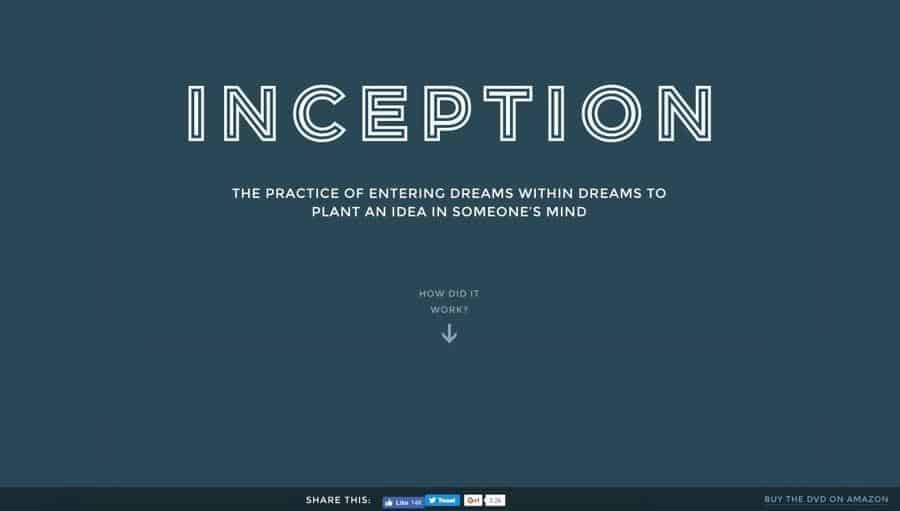
Source: inception-explained.com
it basically lays out and explains the plot of the film – which some of you may know, is thought to be one of the more thought-provoking plots in movie history.
It’s not quite related to the brand who developed it (Together – which I now defunct). However, the brand was an app that allowed people to share photo albums privately.
Sharing memories, the movie was about going into people’s memories and dreams – you can see the connection.
6. Competitor Research.
This can be really good if you have a very successful competitor who has been building links for a while, and you want to reverse engineer what they’ve been doing.
A good tool for using this is Ahrefs.
What I normally do is:
- Make a list of the top 5 competitors (10 competitors if they have relatively small backlink profiles)
- Plug each site into Ahrefs
- Go into the “Backlinks” section
- Filter for Link Type “Dofollow”
- And extract a spreadsheet report of these links

Now, where some people make a mistake, is to reach out to each site and ask to guest post for them. However, you need to assess each of your competitor’s links on a case by case basis. What did they do to get that link? What “link type” is it?
It can often be an opportunity to get a feel for the kind of content that is deemed valuable enough to link to – so this will come in useful for your content strategy going forward as well.
7. Look out for Trends and Recent News.
Are there any “trends” or important news topics that you can piggyback off and create a content piece from?
Google Trends can be a good marker for seeing “what’s hot,” as well as social media. This is where you need to think less like an SEO, and more like a PR.
Think about what’s current, or something which people will be talking about very soon – and create ideas which relate your niche to that topic.
For example, with everyone talking about Boris Johnson (the UK Prime Minister), Wired created this “techie” SEO piece, which discussed how he might be gaming Google’s results with his PR campaigns.
And I’m sure a few SEO blogs picked up on this and started discussing it as well.
8. University Scholarships (Only if It Makes Sense for You).
The thought of getting links from universities and colleges can be very appealing – high authority domains with strong link equity.
And this technique basically involves:
- Creating a scholarship page for university or college students. Explaining why it exists and how a student can apply. Set a price for the amount you’ll pay students for your scholarship.
- Generate a list of institutions to target. Either just use Wikipedia and create the list manually, or use Google search operators such as the following:
- Inurl:.edu + “outside scholarships.”
- Inurl:.edu + “external scholarships”
- Inurl:.edu + “scholarships”
- Reach out to universities (be it regionally or nationally) and explain your scholarship. Ask if they would be interested in linking to it from their scholarship page. (often if you can’t find a specific person who deals with scholarships, it’ll be the Finance/financial aid department). And mention how much a student receives in the scholarship towards their education.
Now, the problem with this method, it that some took advantage of this technique in recent years, with the end result being scholarship pages that looked really spammy (read more about it in this article). These were probably often the smaller institutions that were a bit more lax with the quality of the scholarships they were linking out to.
What you need to do is ensure that your scholarship and the institution you’re reaching out to look legitimate, and you’re getting links from pages that Google wouldn’t identify as “spammy.”
And one specific thing I would also suggest is that if your business is in a specific industry or area – that you offer scholarships specifically for students to do with that industry. For example, if you’re an accounting firm, offer a scholarship for students hoping to get into the accounting field.
9. Expert Round-Ups.
Ever seen those posts like “50 (Industry) Experts Share Their Thoughts On XXXX”?
That is an expert round-up and is often a brilliant way of attracting links, engagement, and traffic. And it does that primarily by stroking peoples egos.
Here’s a crash course in how it’s done.
- Create a content idea for your industry or sector, which can be defined as a single question. Make sure its something that you’d be able to gather enough “influencers” (people with expert opinion) in your industry to provide a comment or paragraph.
- Make a list of these influencers and reach out to them, asking to give their “tip” on some comment or their answer to a question.
- Collect all this data from everyone and combine it into one piece. Make sure its constructed well and flows like a proper article. You’ll be expected to link back to each of the experts.
- Let them know when it gets published and get their help to promote the article. It’s in their best interest to, as they’re mentioned in the article.
A proportion of them will probably link to you. And at the very least they’ll share it across social media – which only further increases its reach.
To get the creative juices flowing, here’s an example of one which was used in my own link building niche.
The question posed to the experts was, “what was the best link you ever built?”

10. Testimonial Links.
Are there various tools, products, or services you use? Especially if they’re very relevant to your business, you could be looking at a potential source of a link.
A few things to note:
- Don’t lie. Make sure these are tools you actually use.
- Make sure they actually have a space for testimonials/success stories and actively give out links
- In the outreach process, specifically, mention how the tool or product helped you, and point out any specific results you had with it or how it helped your business.
The benefit goes two ways, of course, which is why this works. You get a bit of brand awareness and some link equity while they get a real testimonial of their product from an actual user.
11. HARO Link Building Services.
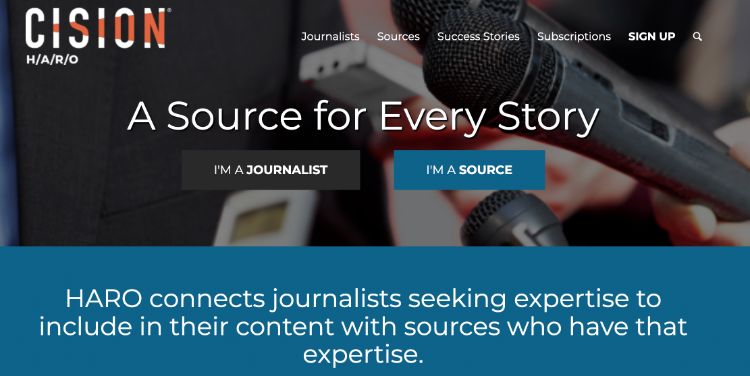
HARO (Help A Reporter Out) is a service that connects journalists with sources for their stories. It’s used by some of the biggest publications in the world, including Forbes, Entrepreneur, Huffington Post, and more.
All you need to do is signup for an account, select the topics you want to be notified about, and wait for the emails to come in.
When a journalist sends out a query related to your industry, simply respond with your thoughts and include a link to your website. If they like what you have to say, there’s a good chance they’ll quote you and link back to your website.
There are also various HARO link building services that can automate the process and make it even easier.
Link Building Strategies – Conclusion.
Now, this is by no means a comprehensive list of every single strategy you can use to build links. The reality is there are probably dozens more other than these.
The key take-home you should take from this is that most of these techniques have one core thing in common – leverage. If you have leverage, something that the other person at the end of the email recognizes, it gets them thinking and makes it that more likely that they’ll give you a link.
Linkbuilding is one of the best SEO strategies out there. With the right SEO tools and blogging strategies, you’ll be building Domain Authority in no time.
***
Amit Raj, aka “The Links Guy,” runs Amit Digital Marketing – an agency that specializes in running bespoke link building campaigns for clients across many industries.


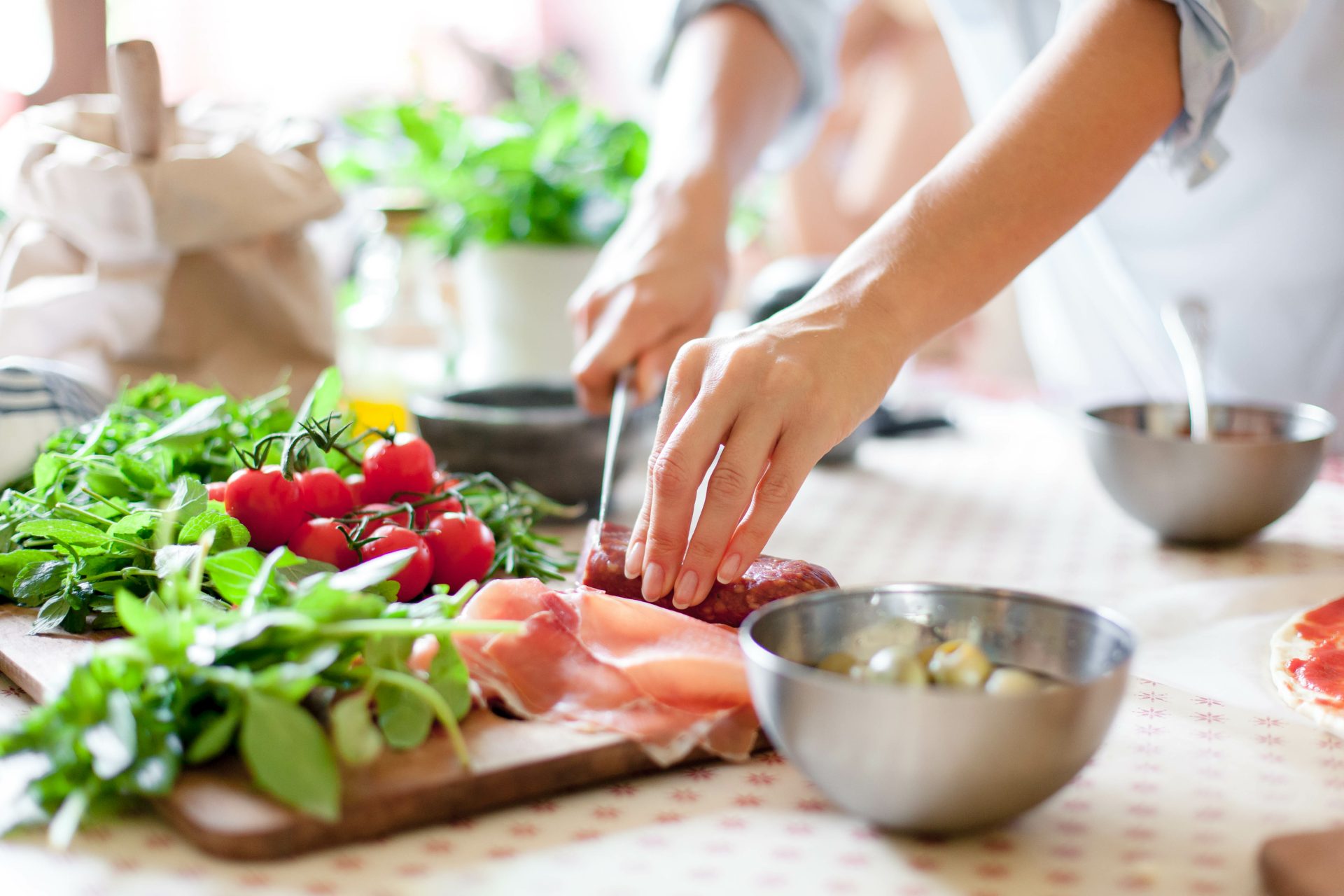
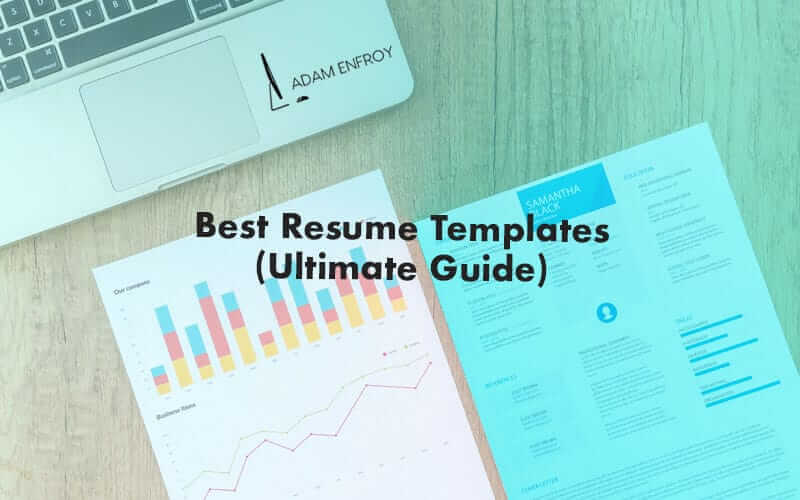


Hi Adam,
Thank you so much for giving details on link building strategies all together. This is very helpful to find out the exact niche related sources to get backlinks free.
Really I am getting understand, a blogger has deep knowledge and hardwork behind it’s money making blog. It’s hard to establish as a new blogger nowadays. Link building boost up new blogs before being a brand.
Best wishes!
Sadhan Pal
Thank you for sharing us the link building strategy
Thanks for sharing this wonderful blog commenting sites list.
Really liked the guest post section. Looking at the amount of link you claimed through guest posts, this certainly works even now.
Really liked the guest post section. Looking at the amount of link you claimed through guest posts, this certainly works even now.
I loved your post
Thanks for sharing these advanced operators!! As it really going to help me out for my link building activities. And that competitor research tip is on point. Really enjoyed reading this blog.
Thank’s for sharing with us
Really nice written Ideas and Tips!
Love it when someone talks about a topic he really understand 🙂
Thanks, Adrian – I appreciate it!
Thanks for this mammoth link building guide. Most webmasters are stuck in SEO practices that used to work in the past but they don’t work now. No SEO strategies are long-term when it comes to ranking on Google but, if done right, it still can generate traffic atleast. Now, I always say before anyone starts going crazy with SEO or any other traffic strategies they must focus on optimizing their sites for higher opt-in and sales conversions. That is something most webmasters overlook and then, they get stuck wondering why are they getting so much traffic but no conversions. Conversions is a by-product of a strategic process and traffic is the last thing in that process. Unfortunately, most webmasters focus on the wrong things for a long time, which is why most are struggling.
Thank you for sharing with us such a wonderful post about the link building strategy. I really like your post and I will also share this post with my friend too.